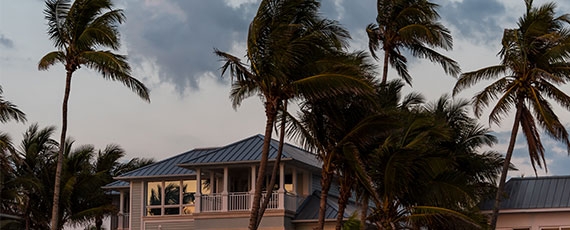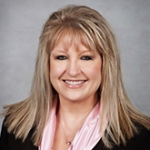Natural Disasters: Understanding the Impact on the Personal Insurance Market and the Insured

Since 2002, the frequency of weather events in the US has doubled. There have been significant increases in both frequency and severity in all categories of weather including winter storms, hail, flooding, wildfires, and other catastrophic (CAT) events. In addition, major disasters like floods and tornados are happening progressively more in areas that haven’t been impacted before. In addition to physical losses they’ve caused, these weather trends are contributing to a shift in the personal insurance marketplace.
Insurance Impact — Marketplace Cycles
The insurance industry goes through soft and hard market cycles. During a soft cycle, underwriting criteria is typically more flexible, insurance coverage is readily available, and insurance rates are stable. In a hard market, the opposite is true. Typically, the main cause of a hardening market is a long period of heavy claims activity, such as what we’ve seen as a result of the recent rise in severe natural disasters in the US.
Munich Reinsurance Co. (Munich Re) reports $144 billion in insured losses from worldwide natural disasters in 2017 and $80 billion in 2018. The most costly events in the United States in 2018 were the Camp Fire in Northern California and Hurricane Michael, with insured losses of $12.5 billion and $10 billion respectively. Worldwide cyclone activity caused above-average overall losses of $56 billion in 2018.
These tremendously high losses are due not only to the amount of property damaged, but also the increasing cost to repair and rebuild. With all the new technology in homes and the cost of high-end appliances and features, insurers are finding it is more expensive to rebuild a home as agreed under the homeowners policy contract. Further, when there are large amounts of regional losses at once — more than 5,000 homes were destroyed in the California wildfires, for example — it often results in a shortage of construction supplies as well as skilled labor. Costs are driven up, and homeowners may find that even the 150% replacement cost provided by specialized insurers is still not enough.
Impact on the Policyholder – What to Expect
Such large financial losses are prompting many insurers to tighten their underwriting guidelines and take additional loss mitigation steps of their own. To avoid taking on too many risks in a certain area, they may not be writing new policies for homes in certain areas of CAT-prone states like California and Florida, or implementing stricter guidelines on the properties for which they will offer coverage. Some are also choosing to non-renew certain properties.
So, as a homeowner, what can you expect when it comes time to seek new insurance coverage or renew your policy?
It may be harder to find coverage for your home. This is especially true if you live in an area prone to natural disasters since insurers are looking much more rigorously at homes in these areas.
You may be subject to new pricing structures. In addition to higher premiums, insurance companies may be instituting special deductibles on certain losses, such as hail, that may not have been part of your policy before.
There may be additional requirements. Some insurers may require additional inspections and specify requirements, such as clearing brush further back on your property or adding central station alarms. Be prepared to comply with preventative safety measures required by insurers.
Plan ahead for longer lead times and approach your broker as early as possible. In addition to the extra measures insurers are taking, you may need more time to search for other coverage options, especially if you have more than one policy — home, auto, valuables, excess liability, etc. — with a specific insurer. Be on the lookout for renewal information from your broker and respond in a timely manner, particularly if there are changes that affect your coverage.
Consider E&S carriers. If you are having a difficult time finding insurance coverage for your home, your broker may suggest an Excess & Surplus (E&S) carrier. E&S carriers (also referred to as non-admitted carriers) do not file their rates with the states where they place policies, therefore consumers are not guaranteed the same claims protections from the state as with a standard (i.e., admitted) carrier in the event of financial insolvency. Because they may set their own pricing and terms, they are often more willing to consider high-risk properties. Although E&S coverage can be costly and is not regulated by the state, it can provide more insurance options when there is a special need that cannot be met by standard insurers. However, the benefits and risks of this type of policy should be discussed with your insurance advisor prior to making any purchase decisions.
Expert Advice
In challenging market times, it’s helpful to have a relationship with a personal risk advisor and broker who can provide guidance, expertise, and advocacy. In addition to being prepared for what a changing market can bring, be sure to plan ahead for future natural disasters or weather events. Learn more about preparing for natural disasters or contact us to discuss your insurance options with a personal risk advisor.
Resources
natcatservice.munichre.com

